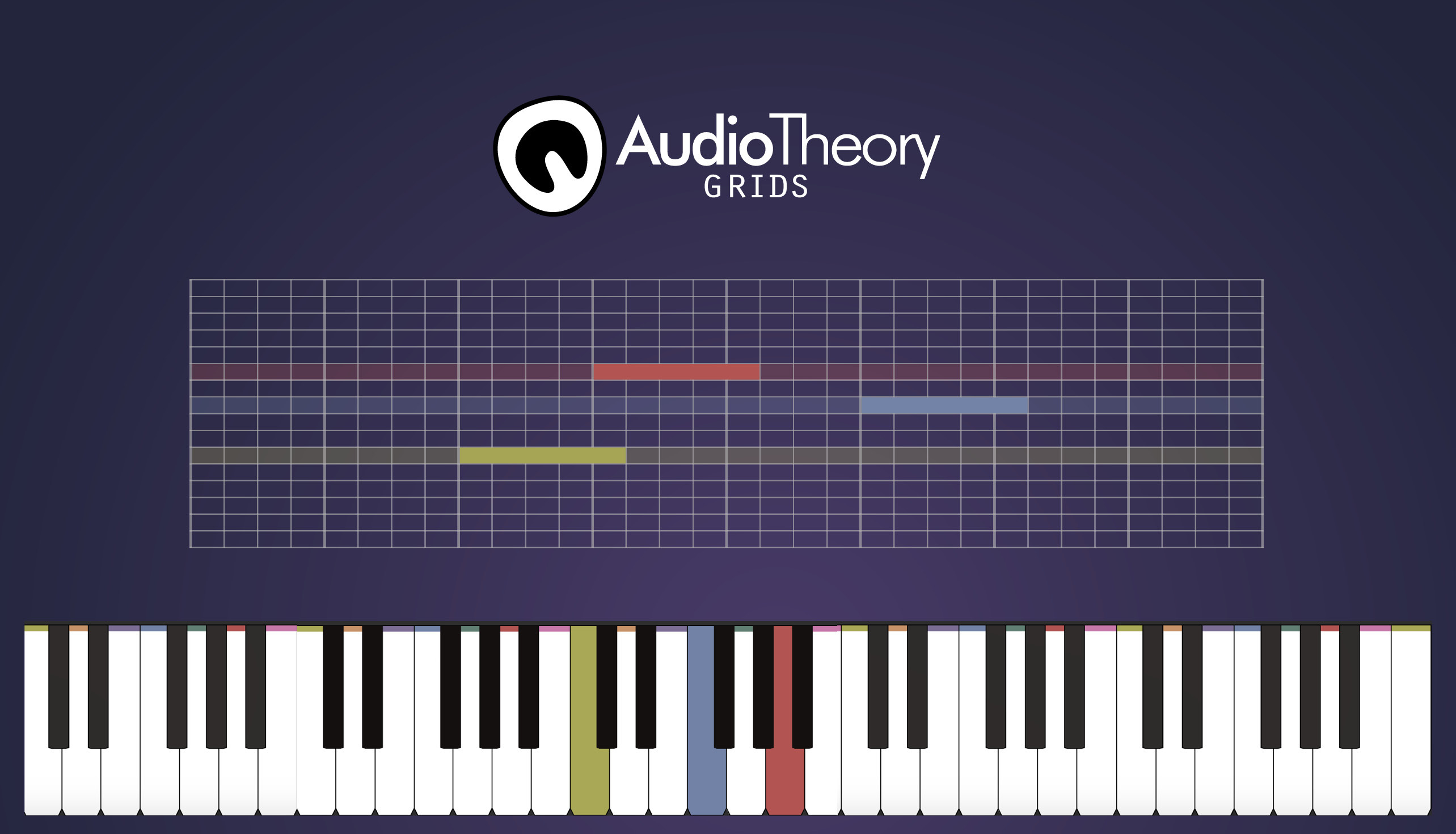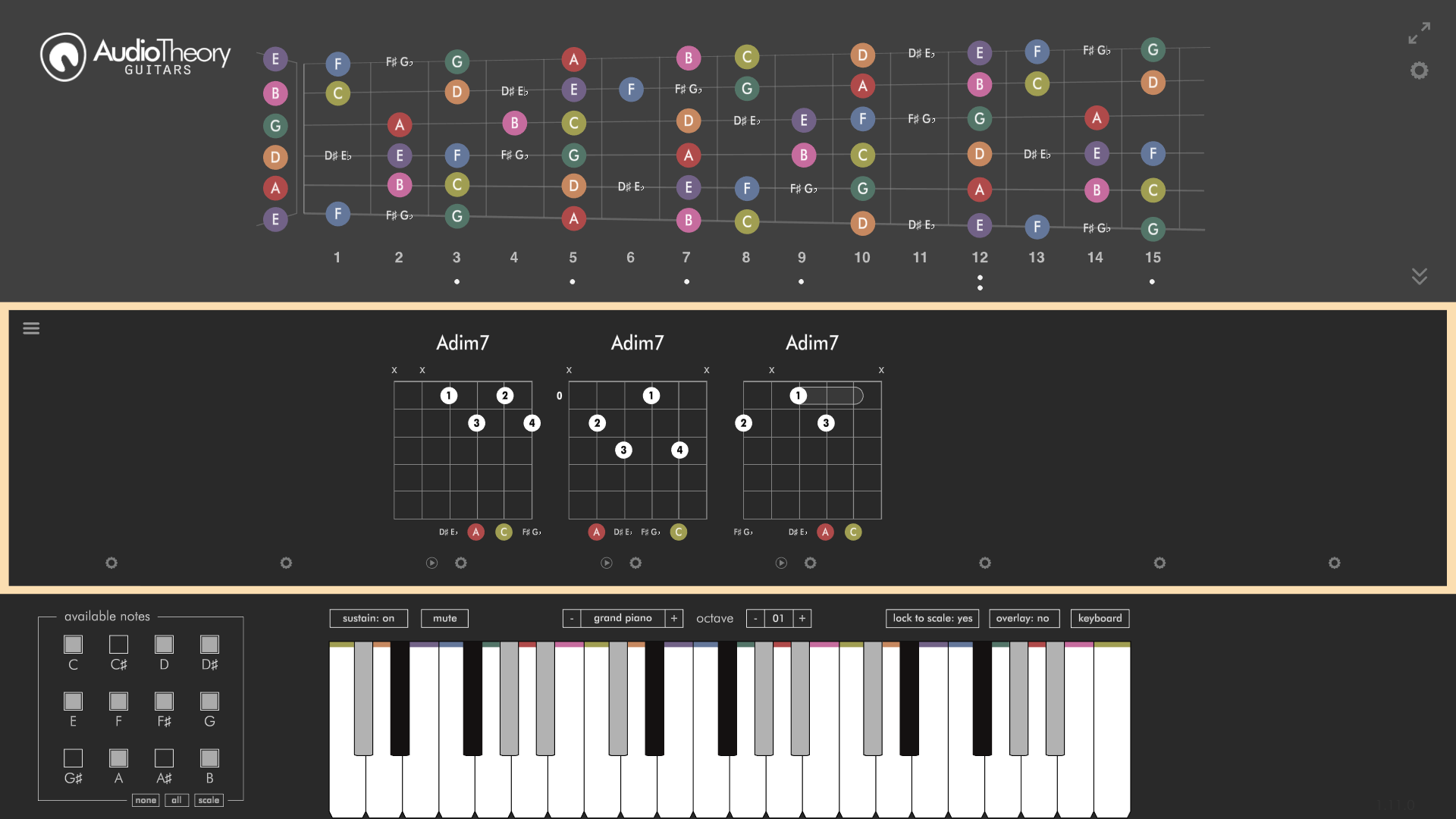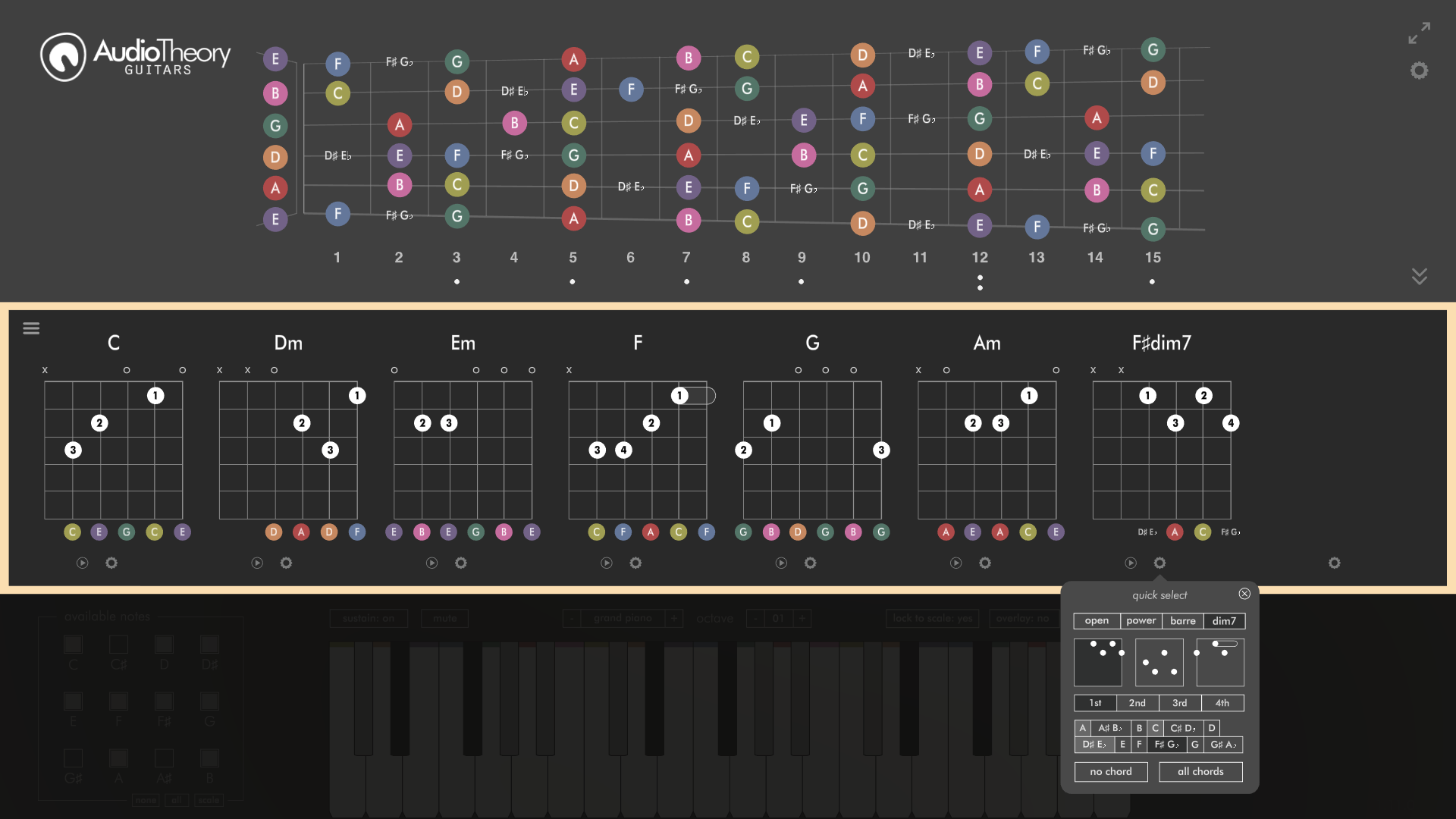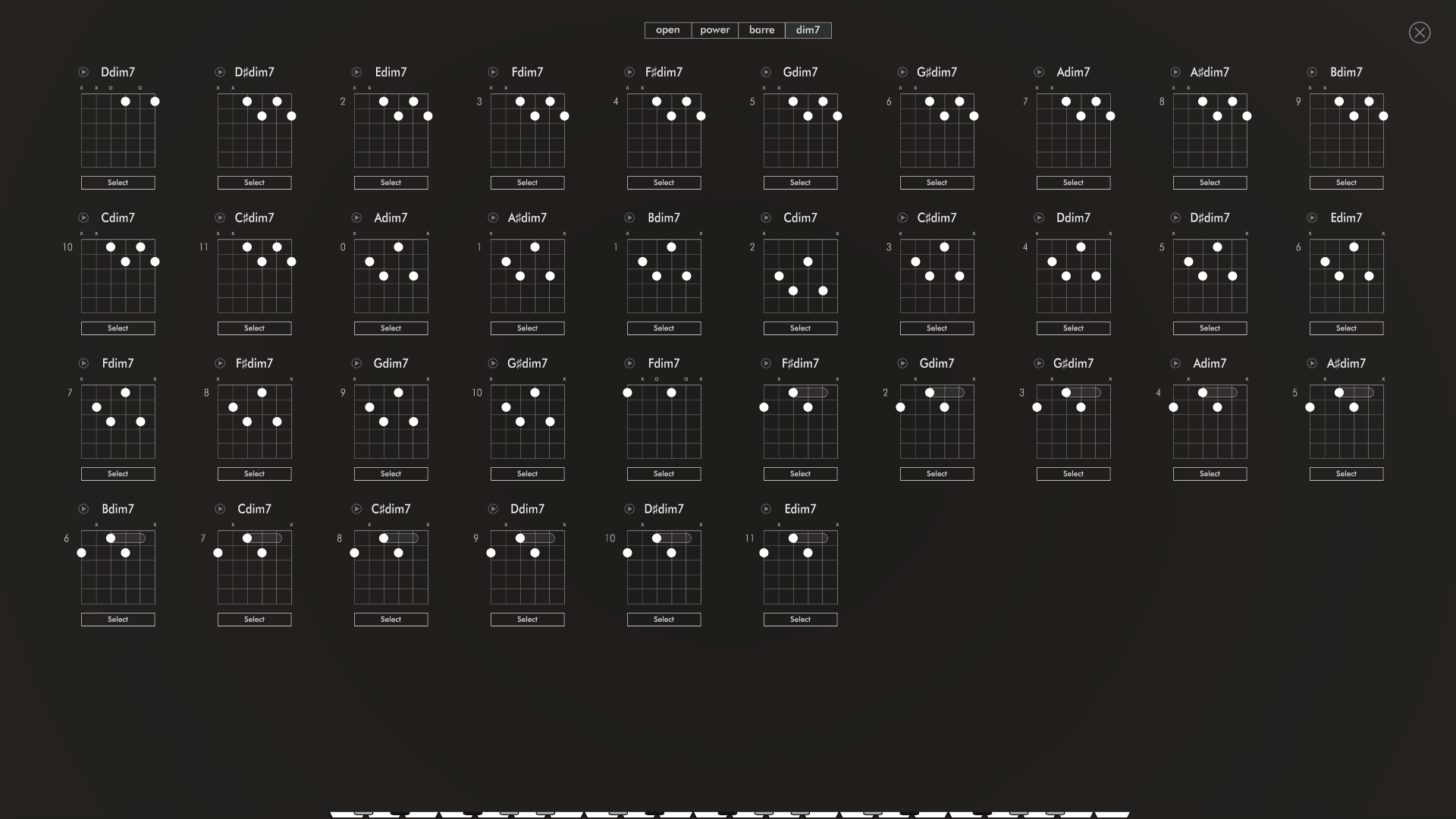AudioTheory Guitars 1.12.0 – Scale Based Highlighting Update
AudioTheory Guitars version 1.12.0 is now here and this latest update introduces an extension to the colour coding system which I have dubbed 'scale based highlighting'. This applies the colour/ note relationship currently used for the white keys onto the black keys, where the colour used is determined by the selected scale.

The idea behind this is that just as the names for the black keys can be context dependant (say, C♯ or D♭ depending on the scale) the highlighting colour can be too. That means that when, say, C♯/ D♭ is presented as C♯ it highlights in yellow (the colour used for C) but when it's D♭ it highlights in orange (the colour for D). As such you have a consistent colour spectrum used through the scale preset.
As this is all scale-dependant, to make use of this you must first select a scale from the preset selector.

This update also includes a few other bits and pieces:
–The note overlay names now also display as a sharp or flat relative to the selected scale.
–There is a new 'invert fretboard' option in the settings. This reverses the order the guitar strings display on the diagram.
–There is now a second keyboard overlay option that assigns a key to each of the piano notes sequentially across all three octaves. This (option 2) can be used instead of the default overlay (option 1 – a single octave across two rows) by selecting either the 1 or 2 option next to the 'keyboard' button.

And finally, this update coincides with the announcement of my next software release; AudioTheory Grids. You can check this out on Steam, it comes out September 25th and if you are interested in a grid-based sequencer with a focus on music theory then please do add it to your wishlist!
AudioTheory Grids on Steam

Anyway, I added in some new instrument presets for Grids and they are also coming to AudioTheory Guitars... today! The guitar preset has been replaced with a deeper sound that better matches that of a steel string acoustic guitar and there are two new synth presets for you to try out.
Thanks for reading and keep practicing.
Fraser

The idea behind this is that just as the names for the black keys can be context dependant (say, C♯ or D♭ depending on the scale) the highlighting colour can be too. That means that when, say, C♯/ D♭ is presented as C♯ it highlights in yellow (the colour used for C) but when it's D♭ it highlights in orange (the colour for D). As such you have a consistent colour spectrum used through the scale preset.
As this is all scale-dependant, to make use of this you must first select a scale from the preset selector.

This update also includes a few other bits and pieces:
–The note overlay names now also display as a sharp or flat relative to the selected scale.
–There is a new 'invert fretboard' option in the settings. This reverses the order the guitar strings display on the diagram.
–There is now a second keyboard overlay option that assigns a key to each of the piano notes sequentially across all three octaves. This (option 2) can be used instead of the default overlay (option 1 – a single octave across two rows) by selecting either the 1 or 2 option next to the 'keyboard' button.

And finally, this update coincides with the announcement of my next software release; AudioTheory Grids. You can check this out on Steam, it comes out September 25th and if you are interested in a grid-based sequencer with a focus on music theory then please do add it to your wishlist!
AudioTheory Grids on Steam

Anyway, I added in some new instrument presets for Grids and they are also coming to AudioTheory Guitars... today! The guitar preset has been replaced with a deeper sound that better matches that of a steel string acoustic guitar and there are two new synth presets for you to try out.
Thanks for reading and keep practicing.
Fraser








